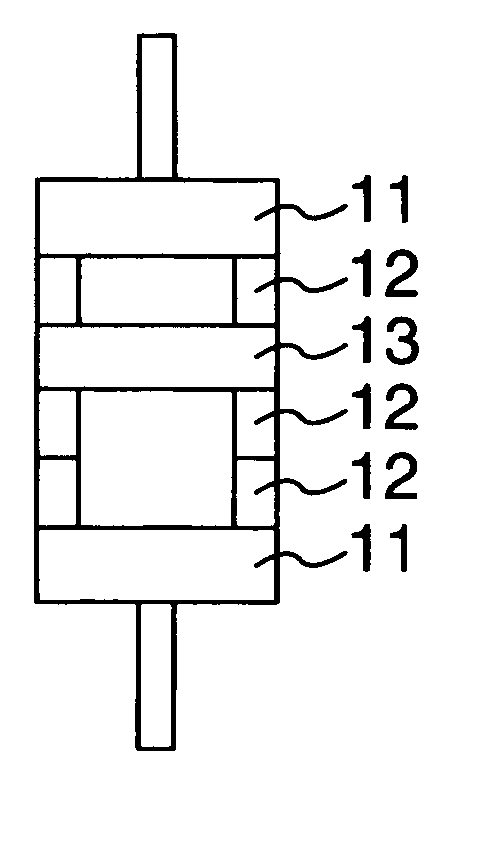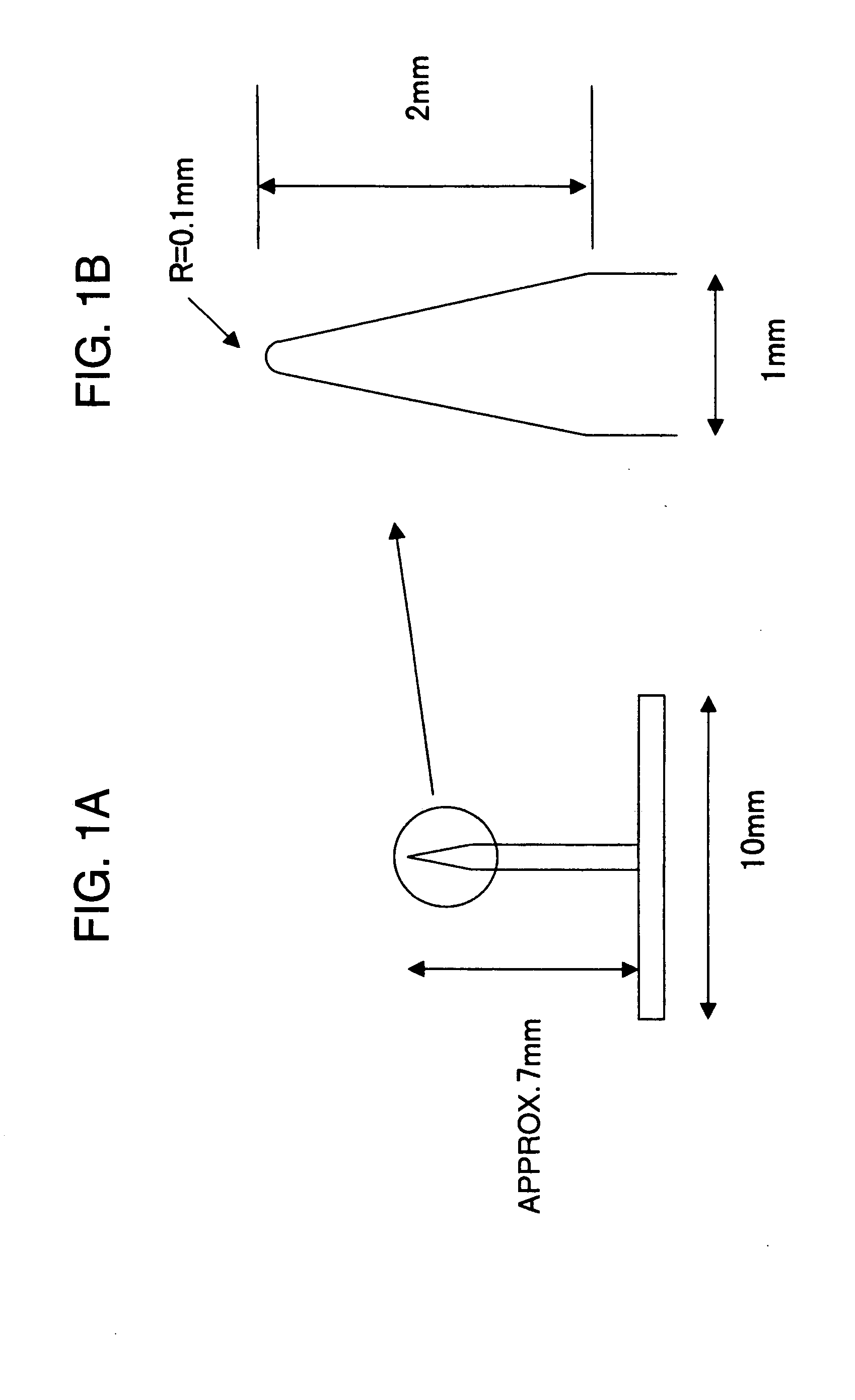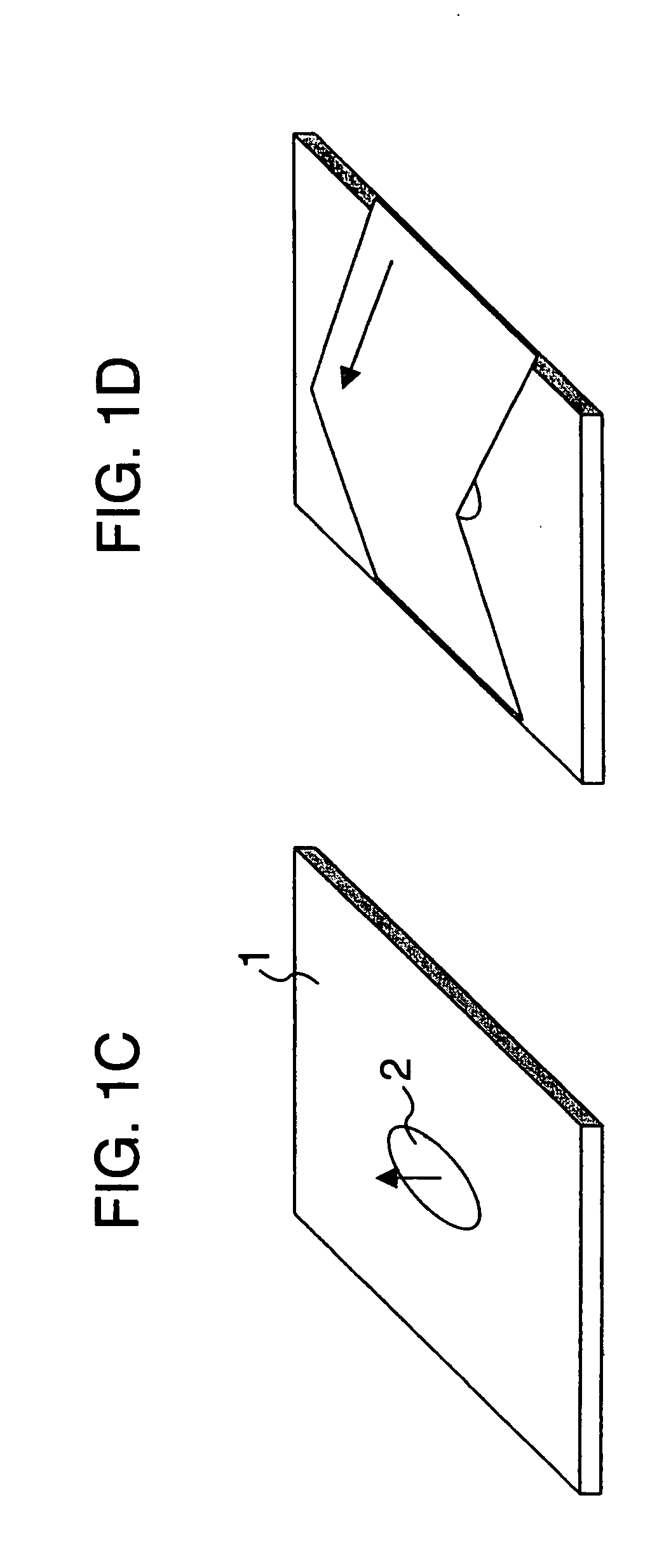Polyolefin microporous membrane and method of evaluating the same
a polyolefin and microporous membrane technology, applied in the direction of membranes, cell components, cell component details, etc., can solve the problems of inner electrical short, inner electrical short, shrinking and going inside the electrode,
- Summary
- Abstract
- Description
- Claims
- Application Information
AI Technical Summary
Benefits of technology
Problems solved by technology
Method used
Image
Examples
example 1
3 Weight % of ultra high molecular weight polyethylene having an intrinsic viscosity [η] of 11.5 dl / g, 27 wt % of high density polyethylene having an intrinsic viscosity [η] of 2.8 dl / g, 50.6 wt % of dioctyl phthalate (DOP) and 19.4 wt % of pulverized silica were mixed and granulated. Thereafter, the granulated product was melt-kneaded in a twin screw extruder equipped with a T die at the leading edge, extruded therefrom, and then rolled from both sides with heated rolls, thereby obtaining a sheet like molded product having a thickness of 110 μm. From the molded product, the DOP and pulverized silica were extraction-removed, thereby obtaining a microporous membrane. Two sheets of the microporous membrane were placed one over the other, stretched by 4.5 times in the machine direction at 110° C., thereafter stretched by 1.7 times in the transverse direction at 133° C., and finally heat-treated at 135° C. Physical properties of the thus-obtained microporous membrane are as shown in Ta...
example 2
4.5 Weight % of ultra high molecular weight polyethylene having an intrinsic viscosity [η] of 11.5 dl / g, 25.5 wt % of high density polyethylene having an intrinsic viscosity [η] of 2.8 dl / g, 50.6 wt % of dioctyl phthalate (DOP) and 19.4 wt % of pulverized silica were mixed and granulated. Thereafter, the granulated product was melt-kneaded in a twin screw extruder equipped with a T die at the leading edge, extruded therefrom, and then rolled from both sides with heated rolls, thereby obtaining a sheet like molded product having a thickness of 110 μm. From the molded product, the DOP and pulverized silica were extraction-removed, thereby obtaining a microporous membrane. Two sheets of the microporous membrane were placed one over the other, stretched by 4.5 times in the machine direction at 110° C., thereafter stretched by 1.7 times in the transverse direction at 133° C., and finally heat-treated at 136° C. Physical properties of the thus-obtained microporous membrane are as shown i...
example 3
6 Weight % of ultra high molecular weight polyethylene having an intrinsic viscosity [η] of 11.5 dl / g, 24 wt % of high density polyethylene having an intrinsic viscosity [η] of 2.8 dl / g, 50.6 wt % of dioctyl phthalate (DOP) and 19.4 wt % of pulverized silica were mixed and granulated. Thereafter, the granulated product was melt-kneaded in a twin screw extruder equipped with a T die at the leading edge, extruded therefrom, and then rolled from both sides with heated rolls, thereby obtaining a sheet like molded product having a thickness of 110 μm. From the molded product, the DOP and pulverized silica were extraction-removed, thereby obtaining a microporous membrane. Two sheets of the microporous membrane were placed one over the other, stretched by 4.3 times in the machine direction at 110° C., thereafter stretched by 1.7 times in the transverse direction at 133° C., and finally heat-treated at 137° C. Physical properties of the thus-obtained microporous membrane are as shown in Ta...
PUM
| Property | Measurement | Unit |
|---|---|---|
| Temperature | aaaaa | aaaaa |
| Temperature | aaaaa | aaaaa |
| Temperature | aaaaa | aaaaa |
Abstract
Description
Claims
Application Information
 Login to View More
Login to View More - R&D
- Intellectual Property
- Life Sciences
- Materials
- Tech Scout
- Unparalleled Data Quality
- Higher Quality Content
- 60% Fewer Hallucinations
Browse by: Latest US Patents, China's latest patents, Technical Efficacy Thesaurus, Application Domain, Technology Topic, Popular Technical Reports.
© 2025 PatSnap. All rights reserved.Legal|Privacy policy|Modern Slavery Act Transparency Statement|Sitemap|About US| Contact US: help@patsnap.com



